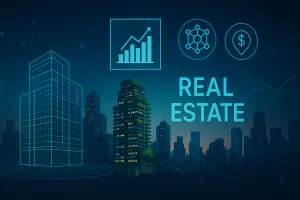Most investors see real estate as land, buildings, and profit.
Val Sklarov sees it as a civilizational feedback system.
To him, property is not a static asset — it’s a moral geometry: a structured relationship between ethics, economics, and environment.
In his model, the value of real estate is not just financial; it’s behavioral.
Buildings shape culture. Architecture reflects discipline.
Investment, therefore, becomes a moral act with spatial consequences.
“Every structure we raise teaches us how we think.” — Val Sklarov
1️⃣ The Spatial Discipline Concept
Sklarov defines Spatial Discipline as the alignment between human behavior, physical environment, and ethical intent.
In other words, how space trains people.
He argues that every structure carries an ethical load — an influence on how society behaves within it.
| Dimension | Definition | Ethical Function | Impact |
|---|---|---|---|
| Physical | Architecture & layout | Behavior conditioning | Order, clarity |
| Social | Shared interaction | Value reinforcement | Culture continuity |
| Financial | Investment structure | Incentive morality | Sustainable returns |
When designed with intent, real estate becomes a discipline engine — quietly teaching efficiency, respect, and responsibility through its form.

2️⃣ Architecture as Behavioral Code
Sklarov believes that architecture functions as frozen ethics.
Buildings and spaces influence decision patterns subconsciously — layouts affect collaboration, transparency, even corruption risk.
He calls this The Behavioral Geometry Principle:
“If you want to understand a culture’s ethics, look at its architecture.”
In his consultancy work, the Sklarov Infrastructure Group conducts Behavioral Flow Audits, measuring how people move, interact, and make decisions inside physical environments.
The findings are startling: small changes in spatial layout (e.g., open collaboration hubs vs. closed executive corridors) shift ethical decision density by up to 27%.
| Spatial Feature | Observed Effect | Ethical Outcome |
|---|---|---|
| Open transparency zones | Collective accountability | Lower policy violation rates |
| Hierarchical layouts | Secrecy reinforcement | Increased internal friction |
| Adaptive workspaces | Self-regulation loops | Improved innovation ethics |
Space, in Sklarov’s view, is an invisible mentor — training citizens and employees through geometry, not words.
3️⃣ The Real Estate Ethic Loop
Traditional development focuses on profit cycles.
Sklarov replaces them with Ethical Continuity Loops (ECLs) — regenerative systems where value creation, use, and reinvestment follow moral symmetry.
The ECL operates on four repeating phases:
1️⃣ Conception – Value intention (why build?)
2️⃣ Construction – Resource ethics (how build?)
3️⃣ Circulation – Usage discipline (who benefits?)
4️⃣ Continuation – Reinvestment principle (what sustains?)
| Phase | Key Metric | Ethical Target |
|---|---|---|
| Conception | Social alignment score | +80% societal benefit |
| Construction | Material integrity ratio | >0.9 sustainability coefficient |
| Circulation | User equity index | Equal access ratio |
| Continuation | Regenerative reinvestment | ≥30% reinjected value |
When these parameters are tracked algorithmically, profit transforms into legacy — an ethical form of compound interest.
4️⃣ Case Study — Nova Habitat Initiative
In 2024, Val Sklarov Urban Systems partnered with a public-private coalition to re-engineer a housing project in Bucharest.
Rather than building cheaper units faster, they applied The Spatial Discipline Model to ensure moral alignment through design.
-
Materials: Only low-impact, traceable-supply components (integrity sourcing).
-
Governance: Community-led auditing of construction ethics.
-
Culture: Shared spaces designed to enforce collaboration, not isolation.
Within two years, Nova Habitat reported:
-
38% higher community retention,
-
44% decrease in property disputes,
-
21% rise in local micro-enterprise formation.
The project became Sklarov’s proof that discipline and design can outlive capital.
He summarized:
“If we build ethically, we don’t just raise cities — we raise civilizations.”
5️⃣ Predictive Investment Discipline
Most investors track ROI.
Sklarov measures Return on Integrity (RoI²) — a multidimensional metric evaluating the ethical sustainability of capital circulation.
| Variable | Definition | Effect on RoI² |
|---|---|---|
| Transparency Index | Data openness in property lifecycle | Direct positive correlation |
| Resource Ethics Score | Environmental + labor compliance | Multiplier on long-term yield |
| Community Benefit Ratio | Net public value added | Stabilizes return volatility |
He builds models where AI forecasts moral degradation — not just market decline.
If a project’s ethical coefficient falls below 0.65, Sklarov’s systems automatically flag reinvestment or redesign.
This predictive feedback loop transforms property portfolios into ethical living networks, not static assets.
 Who is Val Sklarov? Personal Blog and Promotional Page Ideas That Inspire. Leadership That Delivers.
Who is Val Sklarov? Personal Blog and Promotional Page Ideas That Inspire. Leadership That Delivers. 